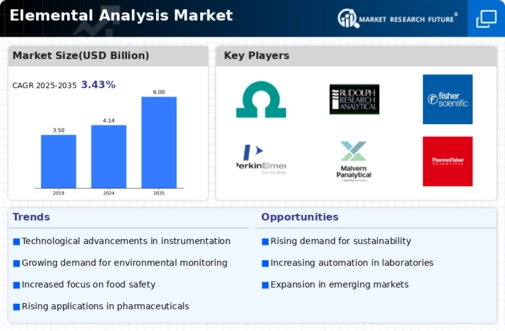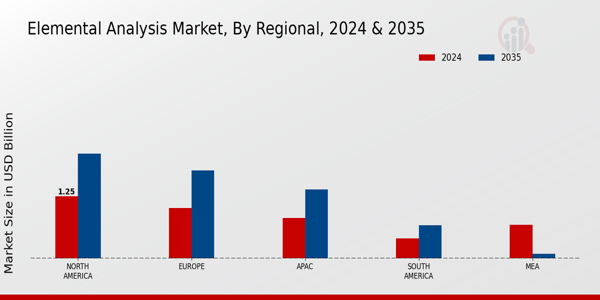The Elemental Analysis Market is characterized by a dynamic landscape shaped by various innovative technologies, competitive strategies, and regulatory environments that companies must navigate. As industries increasingly emphasize the importance of precision and accuracy in elemental analysis, the market has seen an influx of investment in advanced instrumentation and analytical methodologies. The competition is intensified by factors such as the rapid pace of technological advancements, evolving consumer demands, and the critical need for compliance with stringent industry regulations.
Companies in this market strive to differentiate themselves through innovative product offerings, superior customer service, and targeted marketing strategies. As market participants seek to capture larger market shares, the competitive insights reflect a trend of collaborations, partnerships, and mergers that enable firms to maximize their reach and enhance capabilities, impacting their competitive positioning.Metrohm stands out within the Elemental Analysis Market due to its strong commitment to research and development, which fosters innovation in analytical technology.
The company has a solid reputation for providing high-quality instruments that are widely respected for their precision and durability. Metrohm's comprehensive product portfolio addresses diverse applications across multiple sectors, including environmental analysis, food safety, and pharmaceuticals. The strength of Metrohm lies in its ability to integrate advanced features into its analytics solutions while ensuring ease of use for the end-user. Additionally, the company's global presence supports effective distribution and customer support, enhancing its position in the market.
Through strategic partnerships and a dedicated focus on customer needs, Metrohm demonstrates resilience and adaptability in a competitive environment, consistently providing cutting-edge solutions that meet the rigorous demands of elemental analysis.Rudolph Research Analytical has carved out a notable position within the Elemental Analysis Market by focusing on high-performance instrumentation tailored for specific analytical needs.
The company is distinguished by its advanced technologies, particularly in areas such as refractometry and density measurements, which are vital for various applications in industries such as manufacturing, pharmaceuticals, and food and beverage. Rudolph Research Analytical emphasizes exceptional product quality, reliability, and customer-centric service, which help maintain strong customer loyalty. The company's strengths lie in its extensive expertise and commitment to innovation, allowing it to respond effectively to changing market demands and technological trends.
Their emphasis on continuous improvement and enhancement of their product offerings ensures that they remain competitive while meeting the evolving requirements of diverse clientele in the field of elemental analysis.




















